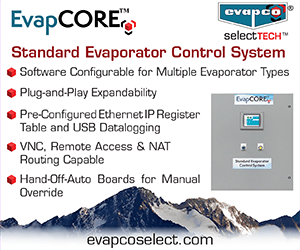RMP Rule Changes Resulting from the SCCAP Rule
He said the rule will impact Program 3 facilities using anhydrous ammonia, and many of the changes will also apply to Program 2 facilities. He also expects the new rule will create a lot more engagement with standards among those in the industry.
“Part of the SCCAP changes to the RMP rule requires future Process Hazard Analysis (PHAs) to evaluate changes to standards, and the facility will have to consider whether or not to incorporate new requirements in RAGAGEP (Recognized and Generally Accepted Good Engineering Practice) standards to lower hazards,” Reindl said.
If owners or operators specify IIAR for their RAGAGEP, the SCCAP rule changes for sure will involve IIAR 2. IIAR 4, 5, and 6 will also be relevant. “As part of PHAs, owners/operators will need to consider changes to RAGAGEP standards. In addition, they will have to consider hazards posed by natural events that include high winds, flooding, hurricanes where relevant, earthquakes, etc.,” Reindl said. “Also, facilities need to be more cognizant on facility siting, including where portions of their refrigeration systems may be close to the border of the property and present greater risks to those off-site.”
RMP CHANGES BASED ON THE SCCAP RULE
There are several sections of the rule that outline new requirements. Beginning on May 10, 2024, end users must ensure and document these new requirements. The process is designed and maintained in compliance with RAGAGEP. PSI must be kept up to date.
The owner or operator shall certify that they have evaluated compliance with the provisions of this subpart at least every three years to verify that the procedures and practices developed under this subpart are adequate and are being followed.
Additionally, PHAs must consider natural hazards, including those resulting from climate change, and a PHA must include a gap analysis between the existing system and the current RAGAGEP. The new rules also require justification for PHA recommendations not adopted. Regarding Hot Work Permits, after the Hot Work itself and the associated fire watch is completed, the permits must be kept for three years.
By May 10, 2027, facilities need to have standby or backup power for continuous operation of monitoring equipment associated with prevention and detection of accidental releases. The rule will also require incident investigation and root cause analysis by a third party if an ammonia refrigeration system has a release and/or an accident that caused damage to people, property, or the environment. It also requires a third-party compliance audit to take place whenever a facility has an RMP-reportable accident and requires justification when TPCA recommendations are not adopted.
Facilities also have until May 10, 2027, to engage employees and have them participate in resolving findings and recommendations from PHAs, compliance audits and incident investigations. It establishes requirements to enable employees to “stop work” and to anonymously report RMP non-compliance or RMP-reportable accidents. Reindl said staying up to date with the latest changes can always be challenging for end users. He recommends they sign up for PSM or RMP rule change alerts via Google.













